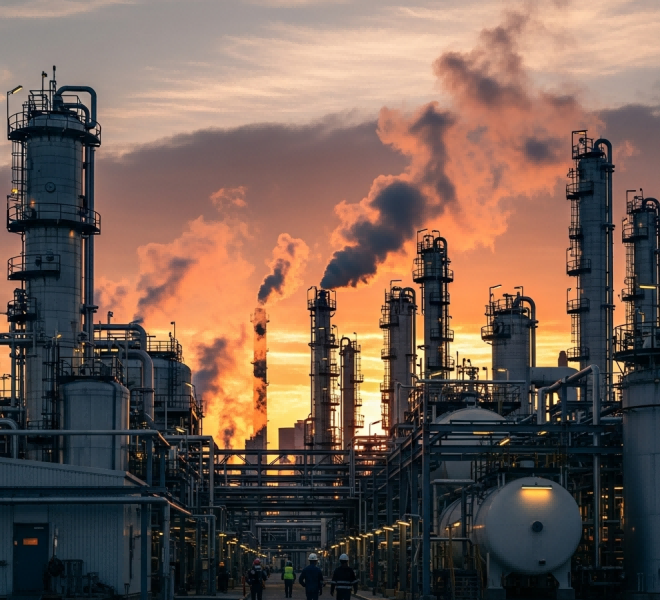
Key Applications & Technical Details
1.Reactor & Tank Inerting:
In fine chemical, API (Active Pharmaceutical Ingredient), and polymer production, many chemical reactions are extremely sensitive to oxygen. Inerting a reactor or tank with nitrogen creates a completely oxygen-free environment, which serves to: 1) Guarantee Product Purity: Prevents raw materials or finished products from being oxidized, avoiding the creation of unwanted by-products. 2) Ensure Process Safety: For processes involving flammable solvents or combustible dusts, nitrogen is the lifeline that prevents fire and explosion.
2.Pneumatic Conveying & Material Protection:
For powdered or granular chemicals that are sensitive to oxygen or moisture (such as catalysts or polymer pellets), using dry nitrogen as the motive gas for pipeline transport is the safest and most reliable method. It completely prevents the material from oxidizing or absorbing moisture during transfer.
3.Catalyst Regeneration & Protection:
In many chemical processes, expensive catalysts (e.g., precious metal catalysts) need to be "regenerated" to restore their activity after use. This process, as well as the routine storage of the catalyst, must be conducted in a strictly oxygen-free environment, for which nitrogen is the essential protective medium.
4. Coal Chemical & Syngas Applications:
In modern coal chemical processes, such as coal-to-methanol or coal-to-olefins, nitrogen is used extensively for syngas purification, pipeline purging, and the start-up/shutdown protection of critical equipment. PSA nitrogen generators also play a key backup role for large-scale Air Separation Units (ASUs).
Key Technical Considerations for the Chemical Industry
The core of chemical production is "precise process control" and "absolute stability." As a critical part of the process flow, the performance of the nitrogen supply system is directly linked to final product quality and production continuity.
1.Purity Customization & Stability:
Different chemical reactions have vastly different requirements for nitrogen purity. A superior system should offer flexible purity adjustment capabilities (e.g., from 99% to 99.999%), allowing the user to select the most cost-effective purity point for their specific process. More importantly, the system must be able to maintain that purity with absolute stability under varying operational conditions, preventing entire product batches from being ruined by gas impurities.
2.Process Integration & Smart Control:
Modern chemical plants require seamless integration of all equipment. An advanced nitrogen system must be equipped with a powerful PLC smart controller and support standard industrial communication protocols (e.g., Modbus, Profinet). This allows it to connect with the plant's Distributed Control System (DCS) for remote monitoring, data logging, and automated operation, making it a true part of the smart factory.
3.Material Compatibility:
The atmosphere in a chemical plant may contain trace amounts of corrosive gases. Therefore, a system designed for the chemical industry should have its wetted parts—such as internal piping, valves, and sensors—constructed from corrosion-resistant materials like stainless steel to ensure long-term, trouble-free reliability.